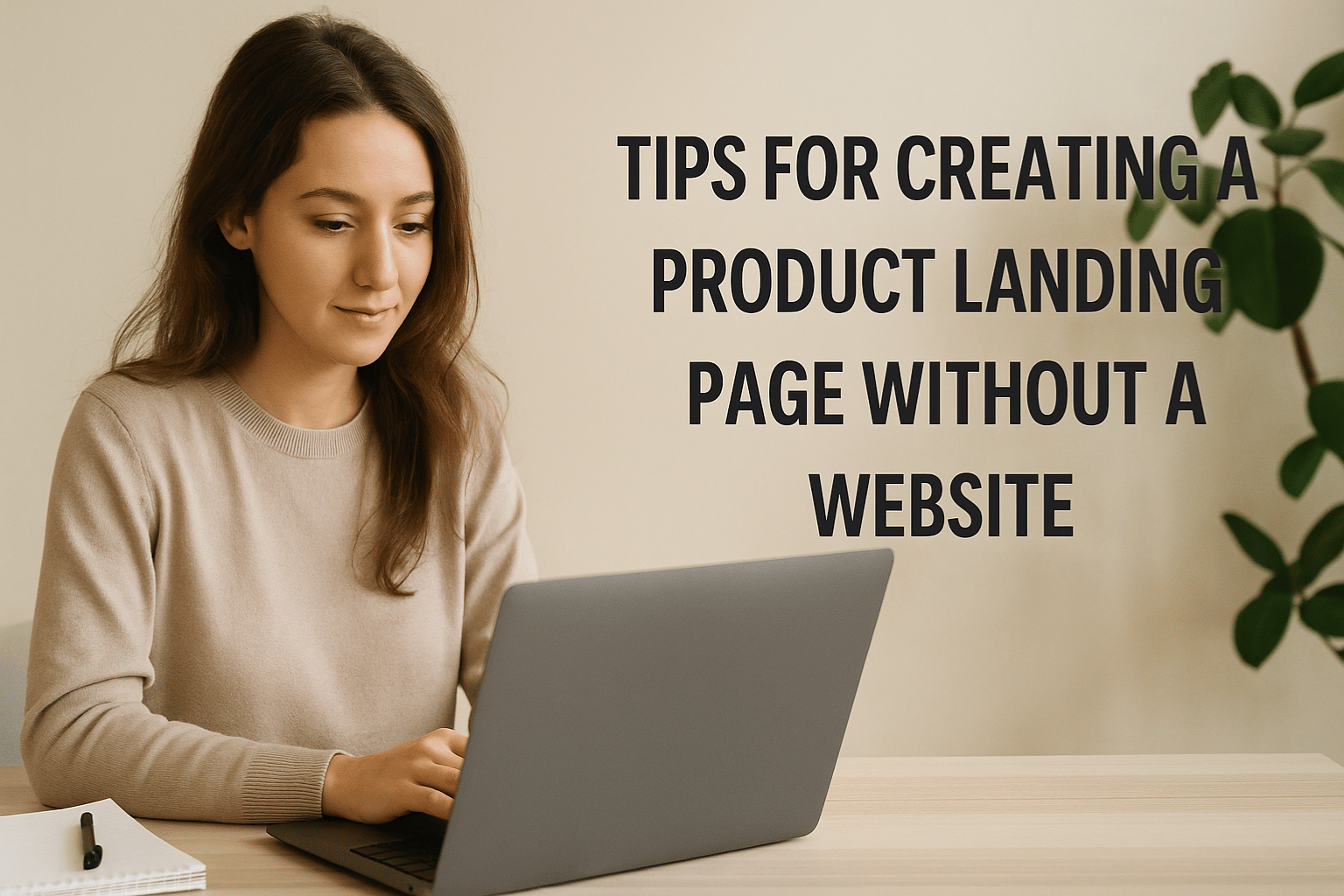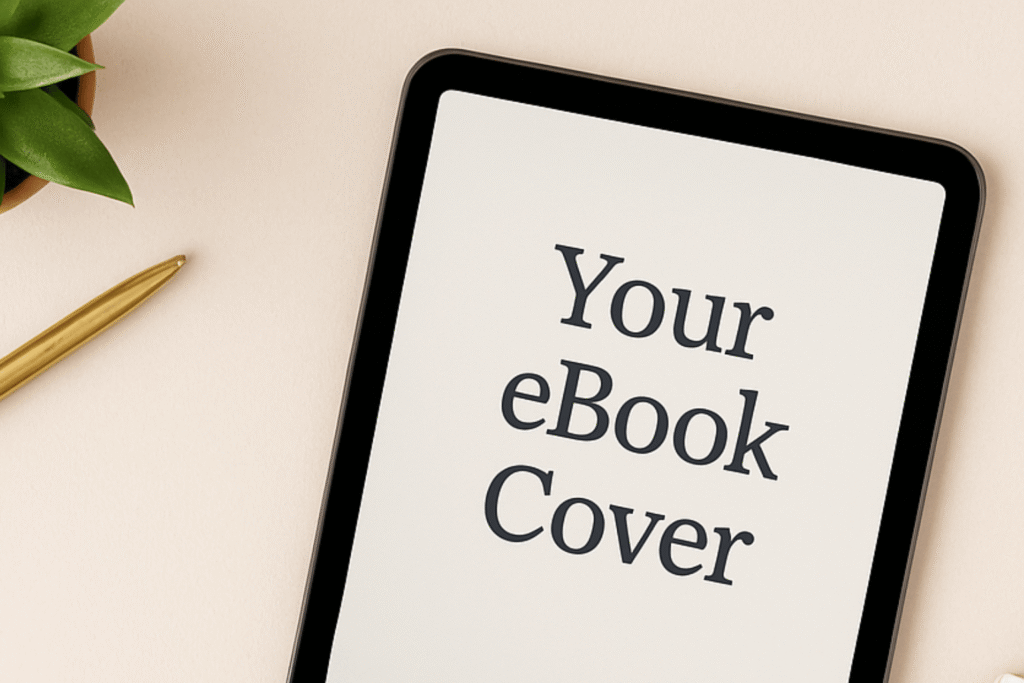When you think about promoting a product online, the first thing that probably comes to mind is having a website. But here’s the truth: you don’t actually need a full website to start selling or sharing your work. Many creators, freelancers, and small business owners launch their products using just a simple product landing page.
A landing page works as a single space where people can learn about your product, see its benefits, and take action—like downloading, signing up, or making a purchase. And the good news? You don’t have to build a complex site to create one. There are plenty of no website tools that make the process easy and accessible, even if you have no coding experience.
In this post, we’ll cover practical tips for creating a product landing page without a website, the tools you can use, and how to make your page look professional while keeping things simple.
Why a Landing Page Works Without a Website
Let’s start with the basics. Why would someone create a landing page instead of a full website?
Here are a few reasons:
- Faster setup: You can create a landing page in a few hours, compared to weeks of building a site.
- Affordable: Most no-website tools are free or low-cost.
- Focused: A landing page has one clear purpose—getting people to take action.
- Beginner-friendly: No coding, hosting, or complex design knowledge needed.
So, if you’re promoting an eBook, a digital course, or a free template, you can easily get started without investing in a full website.
👉 Related: Check out our article on How to Use Free Mockups to Promote Your eBook or Course.
Tip 1: Choose the Right No-Website Tool
The first step is picking a tool that suits your needs. Luckily, there are many platforms where you can build a product landing page without owning a website.
Here are some popular options:
- Canva Website Builder – Quick and simple designs, ideal for beginners.
- Carrd – One-page websites with lots of customization.
- Gumroad – Great for selling digital products directly.
- Notion – Turn your Notion page into a clean landing page.
- ConvertKit – Perfect if you want to collect emails along with downloads.
- Linktree / Beacons – More basic, but good for directing traffic to a single product.
Pick a platform that aligns with your goal. For example, Gumroad is excellent if you’re selling, while Canva or Notion might work better for free downloads.
Tip 2: Keep Your Page Focused
A landing page isn’t the same as a homepage. Instead of giving people lots of options, you want them to take one action. That could be:
- Downloading your freebie
- Signing up for your mailing list
- Purchasing your eBook or course
Everything on your page should support that one action. Keep the layout clean, avoid distractions, and guide your visitor directly to the button or form.
👉 You can learn more about offering freebies in our post on Email Marketing Tips for Sharing Free Digital Downloads.
Tip 3: Highlight the Benefits, Not Just Features
When writing copy for your landing page, don’t just list what your product includes. Instead, explain how it helps.
For example:
- Instead of: “This planner has 35 pages.”
- Say: “This planner helps you organize your day, set goals, and stay productive.”
People care more about how your product solves their problem than the technical details.
Tip 4: Use Visuals to Build Trust
Since your landing page replaces a website, visuals play a huge role in making it look professional. This is where mockups can help.
If you’re promoting an eBook, use free mockup templates to show your cover on a tablet or in 3D. If you’re selling a course, display it on a laptop or bundle it with worksheets.
Good visuals make your product feel real and increase credibility.
👉 Related: See our guide on Free Product Mockup Templates for Etsy & Gumroad Sellers.
Tip 5: Keep Your Design Simple
When building a landing page with no website tools, avoid over-designing. A good structure usually looks like this:
- Headline – A short, clear statement about what the product is.
- Subheadline – A sentence or two explaining the benefit.
- Visuals – Mockups, images, or screenshots.
- Features/Benefits – Bullet points explaining what’s included.
- Call to Action (CTA) – A clear button like “Download Now” or “Get Access.”
This format works because it’s easy to follow and gets to the point.
Tip 6: Add Social Proof
If you’ve shared your product with friends, clients, or early users, include their feedback. Even one or two quotes can make your product more trustworthy.
If you don’t have testimonials yet, you can show numbers instead:
- “Downloaded by 200+ people”
- “Used by students in 5 countries”
Social proof makes your landing page stronger.
Tip 7: Optimize for Mobile
Most people will visit your landing page from their phone. Make sure your page looks good on smaller screens. Test it before sharing.
Simple tips:
- Keep text short and readable.
- Make buttons large enough to tap.
- Avoid images that are too big and slow to load.
Tip 8: Collect Emails When Possible
Even if your main goal is sharing a product, think long-term. Collecting emails allows you to stay connected with your audience.
For example, instead of giving a direct download link, ask visitors to enter their email. Then deliver the file through an automated message.
This way, you’re not only promoting your current product but also building a list for future launches.
👉 For more on this, see our guide: How to Create a Lead Magnet Using Free Canva Templates.
Tip 9: Test and Improve
Don’t expect your landing page to be perfect the first time. Watch how people interact with it and make changes.
- If people visit but don’t download, maybe the headline isn’t clear.
- If the page feels empty, try adding visuals.
- If people are confused, simplify the layout.
Small improvements can make a big difference in conversions.
Tip 10: Share Your Landing Page Everywhere
Once your product landing page is ready, it’s time to promote it. Share the link on:
- Social media bios
- Blog posts
- YouTube descriptions
- Email signatures
- Online communities where your audience spends time
The more visibility your landing page gets, the more downloads or sales you’ll see.
Wrapping Up
Creating a product landing page doesn’t require a full website anymore. With tools like Canva, Carrd, Gumroad, and Notion, anyone can build a clean, focused page that promotes their digital product.
The key is to keep it simple:
- Focus on one action
- Highlight the benefits
- Use visuals and mockups
- Collect emails when possible
Over time, you can refine your design and add more advanced features. But to get started, all you really need is a free tool, a clear product, and a little creativity.


